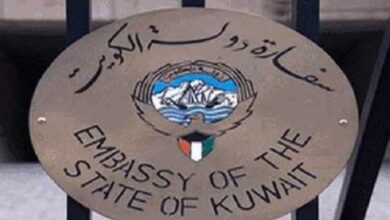Kuwait poised for strategic development projects and economic transformation
Kuwait is set to embark on a series of strategic development projects aimed at boosting the private sector's role in the economy.

• These projects include economic zones, salmon and sea bass aquaculture, the Al-Zour North Power Plant, the Al-Khiran Power Plant, gas turbine units, water desalination, free zone expansion, and a fish and shrimp production complex.
• Despite government efforts, the labor market still faces structural imbalances, productivity remains weak, inflation is on the rise, and oil prices continue to drive the economy.
A recent government report has unveiled a series of strategic development projects that signal a significant shift in Kuwait’s economic landscape.
These projects prioritize strengthening the private sector’s role in driving the local economy.
The report outlines a range of ambitious initiatives, including the development of economic zones, the launch of the first phase of salmon and sea bass aquaculture, expansion of power generation capacity through new phases of the Al-Zour North and Al-Khiran power plants, and the implementation of advanced fish and shrimp production facilities.
The report underscores a critical aspect: the need to expedite the empowerment of the private sector.
This entails a transition for the government, moving away from an operational role and towards a supervisory function.
By assuming a more regulatory role, the government can effectively oversee public policies, aligning with the long-term aspirations of Kuwait Vision 2035.
The General Secretariat for Planning and Development recently released a report titled “Development of Key Indicators for the Kuwaiti Economy During the Period 2010-2024.”
This report sheds light on several crucial economic indicators observed in Kuwait over the past 14 years. Let’s delve into five of the most prominent aspects:
1. Capital expenditure: A focus on growth
Capital expenditure, also known as investment expenditure, plays a vital role in bolstering production capacity and driving economic growth.
The report highlights the General Budget Bill for the fiscal year 2024/2025, which prioritizes streamlining current expenditures while allocating a significantly higher proportion (7.7% increase) to capital expenditures compared to the previous year’s budget. This shift reflects a commitment to long-term growth through strategic investments.
As a result of this increased focus, capital expenditures now constitute 9.3% of the total public expenditures for the fiscal year 2024/2025.
However, the report reveals a concerning trend. Actual capital expenditures in the general budget for the fiscal year 2023/2024 fell short of the planned amount. Only KD 1.8 billion, representing 74%, of the allocated KD 2.2 billion was spent.
This shortfall suggests a potential lack of adherence to the planned disbursement schedule for development projects.
A similar pattern was observed in the previous fiscal year (2022/2023), where actual development plan expenditures amounted to just 56.4% of the amended budget, resulting in significant savings (43.6%).
This data paints a clear picture: development projects are experiencing delays compared to their planned timelines.
The report also highlights that the Ministry of Public Works holds the top spot for expenditure within the 2023/2024 development plan, accounting for a substantial 67.5% of the total spending.
2. Kuwait’s labor market: Challenges and reforms
The Kuwaiti labor market faces ongoing challenges despite serious government efforts to implement economic reforms.This section delves into the current state of the workforce and productivity.
Data reveals a persistent trend: Kuwaiti citizens find the government sector significantly more attractive than the private sector.
During the development plan years, the proportion of Kuwaiti workers in the government sector rose from 74% to 80% of the total workforce.
This indicates a preference for government jobs, which may not translate into overall economic growth for the nation.
The government’s “Kuwaitization Plan” aims to replace foreign workers with Kuwaiti citizens.
This policy has been successful in reducing the percentage of foreign workers in the government sector, with their numbers dropping from 26% to 20% during the development plan period.
A key concern for the Kuwaiti labor market is the weakness in overall worker productivity. Productivity refers to the economic output generated by each worker in the country.
The current figures suggest a need for improvement in this area to achieve sustainable economic growth.
3. Kuwait’s Inflation: A cause for concern
Kuwait has implemented various government policies in recent years with the aim of controlling inflation. However, despite these efforts, the inflation rate has grown steadily since 2019.
In 2019, the inflation rate was 1.1%. This figure climbed to 2.1% in 2020, followed by a more significant increase to 3.4% in 2021. The trend continued in 2022, with inflation reaching 4.0%.
Fortunately, there was a slight slowdown in the inflation rate in 2023. The figure dropped to around 3.6%.
This positive development can be partly attributed to the global slowdown in inflation rates.
4. Gross Domestic Product
Kuwait’s economy remains heavily reliant on oil revenues. Global oil prices continue to be the primary driver,significantly impacting the country’s overall economic performance.
The Kuwaiti government has implemented significant investment programs aimed at diversifying the economy and reducing dependence on oil.
These initiatives focus on maximizing non-oil revenue streams and empowering the private sector to take a leading role in economic activity.
However, despite these efforts, the desired outcomes and targeted goals have not yet been fully achieved.
The private sector plays a crucial role in a nation’s economic growth and diversification. However, in Kuwait, the private sector’s contribution to the Gross Domestic Product (GDP) has been a cause for concern.
5. Private Sector
An analysis of the private sector’s performance over the past 14 years using the Kuwaiti national economy’s macroeconomic model reveals some interesting trends.
The private sector’s contribution to the local economy has ranged between 23% and 38% during the first, second, and third medium-term development plans.
This wide range suggests a lack of consistency and stability in the private sector’s role.
The analysis also highlights a concerning weakness in the private sector’s involvement in the economy.
During periods when the local economy faced significant deficits due to declining global oil prices,the private sector could have played a more prominent role in diversifying the Kuwaiti economy and introducing substantial added value. However, its contribution fell short of expectations.
Conclusion
Kuwait Vision 2035, a strategic development plan launched nearly 14 years ago, aimed to transform the nation into a globally competitive one. However, a recent evaluation paints a mixed picture of progress.
One of the plan’s goals was to reduce reliance on public sector salaries and subsidies. While there has been a marginal improvement, with the allocation now consuming 79% of the general budget compared to 80% previously, this progress is slow.
Additionally, there haven’t been corresponding improvements in productivity rates.
The Kuwaiti economy remains heavily reliant on oil. Global oil prices continue to be the primary driver, with oil revenues constituting a staggering 88% of the state’s public income.
This dependence on a single resource makes the economy vulnerable to fluctuations in the global oil market.
A positive sign is the slight increase in non-oil revenue sources. These sources now contribute 12% of the state’s total revenues, up from 9%. However, this progress needs significant acceleration to achieve true economic diversification.
Another challenge is the demographic disparity within Kuwait. Kuwaiti citizens make up only 30% of the population,with foreigners constituting the remaining 70%. This imbalance can create social and economic strain.
A significant concern is the inefficiency of government investments throughout the past development plan years.
Despite spending, there haven’t been any tangible improvements or developments achieved to date. This raises questions about the effectiveness of current investment strategies.













